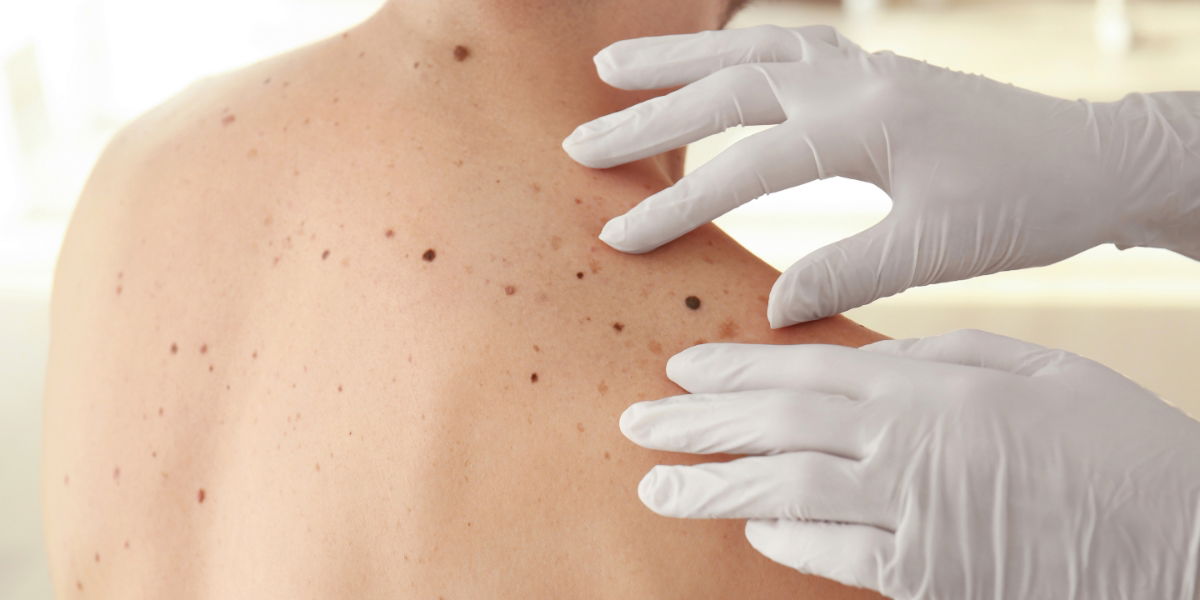
Sun damage can be sneaky — it doesn’t always look like the classic red, sunburned or blotchy skin, although it certainly can. But what many people often don’t realize is that sun damage can also show up on the skin well after a sunburn has come and gone, and it can look like fine lines and wrinkles, sagging skin, dark spots, uneven skin tone and texture, a dull complexion, or spider veins and visible blood vessels.
Fortunately, there are several dermatologist-recommended treatments for sun damage that can address all of these common signs of sun-damaged skin.
1. Laser and Light Treatments
Laser and light skin treatments can correct a wide range of skin problems related to sun exposure and aging, including wrinkles, dark spots, redness, spider veins, and uneven tone and texture. The right laser or light treatment for you will depend on your specific skin concerns.
Laser skin resurfacing with Halo™, for example, both removes flakes of old skin cells from the surface of your skin while also stimulating collagen and cell renewal in deeper layers of skin at the same time. This approach allows the Halo laser to precisely target and correct numerous signs of sun damage and skin aging, including wrinkles, enlarged pores, discoloration, and uneven or rough skin texture.
Broadband light (BBL) treatments are similar to laser treatments but use targeted wavelengths of light rather than laser energy to treat signs of sun damage. BBL treatments such as Forever Young are best-known for their ability to treat redness, spider veins, and hyperpigmentation, though some types of BBL treatments like SkinTyte™ can also significantly improve loose skin and deep creases.

2. Facials and Peels
Sun damage can leave the skin looking and feeling dull, dehydrated, and uneven. Facials and peels can help to restore your skin’s natural glow and brightness for a healthier, younger-looking complexion. As with laser and light treatments, facials and peels come in a variety of types and strengths, making them very customizable.
One popular facial that is often used to brighten sun-damaged skin is HydraFacial™, a multi-step skin rejuvenation treatment that deeply cleanses, extracts, exfoliates, hydrates, and protects your skin in a single session. HydraFacial is gentle enough for sensitive skin and can be customized to suit your skin’s unique needs.
Chemical peels use topical solutions that include ingredients like alpha hydroxy acids (AHAs), trichloroacetic acid (TCA), and others that exfoliate the outermost layer of skin by breaking down the “glue” that holds dead skin cells onto the new, fresh layer of skin beneath. This process reveals a brighter, more even complexion, as well as stimulates collagen and natural cell renewal.

3. Microneedling
Two of the biggest skin concerns related to sun damage are hyperpigmentation and collagen breakdown, which can lead to lines, wrinkles, and sagging skin. Microneedling is often considered one of the best treatments for sun damage because it can effectively treat both of these issues at the same time.
Also called “collagen induction therapy,” microneedling uses very small needles to create what are known as microchannels within the skin. This process stimulates your skin to begin producing new collagen and increase cell turnover. Additionally, microneedling can break up excess pigment in the deeper layers of skin, and the natural cell renewal process will replace those pigmented cells with fresh, evenly-toned cells.
4. Injectables
Injectable treatments like fillers, neuromodulators, and new skin boosters can help to revive and rejuvenate dull, sun-damaged skin. Fillers are commonly used to smooth away fine lines and wrinkles in the mid-face area and around the mouth and lips. They can also add volume to the cheeks and lips, which can prematurely thin after years of accumulated sun exposure.
Neuromodulators like BOTOX® and Dysport® are frequently used to improve the appearance of lines and wrinkles on the forehead, near the eyes, and between the brows — all areas with delicate skin, making them susceptible to sun damage.
To achieve a dewy, ultra-hydrated complexion after spending too much time in the sun, ask your dermatologist about new Skivive™. This FDA-approved injectable moisturizer uses microdroplets of hyaluronic acid to deeply hydrate the skin from the inside out. The result is a very natural-looking boost of hydration and brightness — just what dull, sun-damaged skin needs.

5. Medical-Grade Skincare
Pairing in-office treatments for sun damage with a daily customized skincare regimen can both enhance and prolong your results. Additionally, using the proper medical-grade skincare can help to slow the skin aging process and prevent premature wrinkles, dark spots, and other common sun- and age-related skin issues.
Prescription retinoids, for example, aid in collagen production, accelerate cell turnover, and fade dark spots. The caveat with retinoids and other topical ingredients, however, is that you must use them regularly for several weeks or months before you may begin to see a noticeable difference in your skin’s appearance — but that doesn’t mean they aren’t working beneath the surface! Give your new customized skincare regimen at least 8 to 12 weeks of regular use before assessing results.
Other skincare ingredients that dermatologists recommend for sun-damaged skin include:
- Vitamin C to brighten dark spots and boost collagen
- Alpha hydroxy acids (AHAs) to exfoliate
- Niacinamide for antioxidant protection and increased collagen
- Ceramides for barrier protection and hydration
Of course, don’t forget daily sunscreen! Protecting your skin against the damaging effects of UV rays can prevent signs of sun damage in the first place and can prolong the results of in-office treatments and other topical skincare products.
Bottom Line
Signs of sun damage such as hyperpigmentation, wrinkles, redness, spider veins, and a rough skin texture are typically fairly easy to treat with the right in-office treatment or combination of treatments. Always remember to wear sunscreen to protect your skin from sun damage and reduce your risk of skin cancer.
For more information about the best sun damage treatment for your specific needs, call our Delray Beach office at 561-692-6424 or contact us online to schedule a consultation today!




